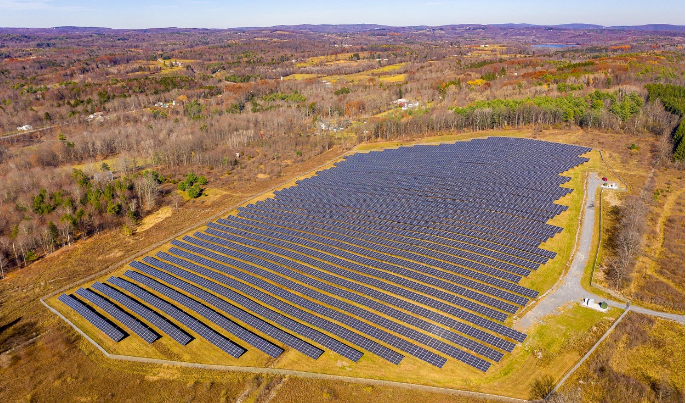Community solar deployment in the US is set to be boosted by support programmes and clean energy commitments from state governments, according to research from Wood Mackenzie, which has increased its install projections in spite of interconnection challenges facing the segment.
The research firm said an additional 4.5GW of community solar is set to be added in the US in the next five years, a 9% increase on its previous forecast.
Forecasts for states such as New Jersey, New York, Illinois and Colorado have all been raised thanks to updated and expanded programmes and clean energy commitments.
The research was carried out in collaboration with the Coalition for Community Solar Access (CCSA), whose CEO, Jeff Cramer, said the US is just scratching the surface of how much community solar is needed to meet customer demand and state and federal energy goals.
“The community solar industry continues to experience a significant period of growth as consumers, small businesses and policymakers realise the economic benefits and cost savings community solar delivers.”
Following New Mexico and Delaware, which both passed legislation in 2021 for new or improved community solar programmes, states such as Pennsylvania, Wisconsin, Michigan and Ohio have proposed bills for community solar that are working their way through state legislatures. If passed, they would represent a significant increase in forecasts, Wood Mackenzie said.
State progress comes after the US Department of Energy announced a target last year to have 26GW of installed community solar capacity by 2025. To reach that goal, the department is offering free assistance to members of the new National Community Solar Partnership, a coalition of stakeholders working to expand access to affordable community solar to US households.
Despite the overall jump in deployment projections, Wood Mackenzie said community solar forecasts in Minnesota and Maryland have decreased due to continued siting challenges, while the outlook for Massachusetts and Maine have also been revised downwards as a result of interconnection delays.
As community solar penetrates more markets, projects will have to contend with interconnection challenges due to grid congestion and outdated infrastructure, said Wood Mackenzie analyst Rachel Goldstein.
“Maine and Massachusetts are experiencing the complexities that come with interconnection studies and upgrade cost allocation decisions. These processes lead to delays and cause project attrition due to cost uncertainties,” she said, adding that these grid challenges could be seen in other US states.
US community solar sector boosted by policy support from states
A 7MW community solar project from Nexamp in New York.
Source:PVTECH
ViaJules Scully






